 |
       |
 |
       |
|
Jhoola: Swinging research as a performance - Sundari Bhatti e-mail: sundaribhatti@gmail.com Photos: Jaison Thomas October 18, 2019 For a cultural buff, it was a treat to be part of an audience with epochal creative personalities for an unconventional program. The live multimedia on the cultural phenomenon of the Jhoola (swing) was by dancer, academician, writer, cultural activist and heritage expert, Dr. Navina Jafa. Jhoola motif showed 'Unity in Diversity' through emotions of expectancy, love, and fertility, portrayal of philosophical, sociological beliefs and seasons. Jhoola is festivities, paintings, architecture, rituals, songs, and dances. Central to it is the omniscient archetypal lovers - Krishna and Radha. The eclectic audience at the India International Centre, New Delhi comprised of the mother of Indian Arts and Culture, Dr. Kapila Vatsyayan, dance legend Pt. Birju Maharaj, designer Rajeev Sethi, renowned historian Prof Narayani Gupta - all gurus of Jafa. The program was dedicated to Kapila Vatsyayan. The Dangal Jhoola by Jafa was a journey through India. Based on a power-point presentation, Jafa invited artists in the audience to spontaneously participate. Said Jafa, "Until early 20th c several North Indian cities saw friendly competitive and informal gatherings of performing artists called Dangal. The senior-most artist called 'Sarkar' in the gathering initiated a creative dialogue related to a theme or a composition. The artists present participated impromptu demonstrating their skill by linking their demonstration to that specific subject." The impromptu performances elaborated aspects of the jhoola that were then critiqued by Jafa hyper-linking to the idea of jhoola. This was, she said, the methodology of Kapila Vatsyayan, one that exhibits the organic multimedia holistic programming of the Indian arts. Quoting Vatsyayan, 'Unfortunately, dancers and singers usually isolate content. They take a piece of literature, song, poem for performance or teaching; but they do not travel to understand the cultural geography from where the content has evolved. Hence, most performances are mere spectacles and not processes. It is imperative to pause, to contemplate and to research the underground patterns of the content. These patterns you will realize are formatted as a complex underground root system. The understanding of the cultural geography or root system of the content enables to create the performance as a process above the ground; and where audiences transform from spectators to rasikas." Ecology, Women, and Lovers 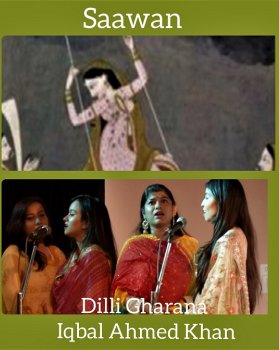 Dilli Gharana 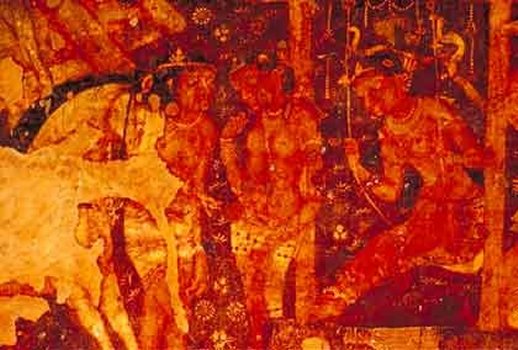 Vidhura Pandita Like the traveling cloud in the classic 'Meghdoot,' Jafa unraveled the rainy Monsoons in the North. Potent energies float aspiring lovers to reunite. The melodious voices of the students of Ustad Iqbal Ahmed Khan of the Dilli Gharana rang - "sayan re bidesi" (Return, my lover, from foreign lands) and "jhoola kinne dala re amriya," (O Girls, who have hung the swings on the branches of blooming mango flowers). Images awakened of women on swings in the season of Saawan and the festival of Haryali Teej. Jafa proceeded to journey to the West of India. There appeared the slide of a painting (Buddhist Jataka Tale - Vidhura Pandita) in the dark Ajanta caves, the serpent princess Irandati swinging to attract the attention of her lover Punnaka. In a spontaneous, exquisite performance by Kathak exponent Saswati Sen, the Jhoola motif went to the next level. Performing "Jhoolat Radhe Naval Kishore" (Swinging as unified energies are Radha and Krishna) her movements, delicate expressions, and intricate footwork patterns wove the essence of the monsoons, emotions, and festivities. 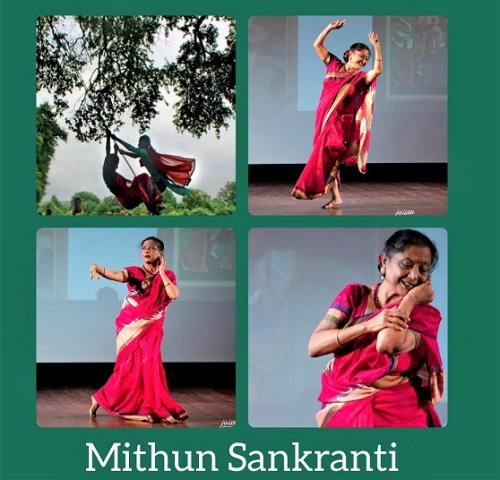 Saswati Sen 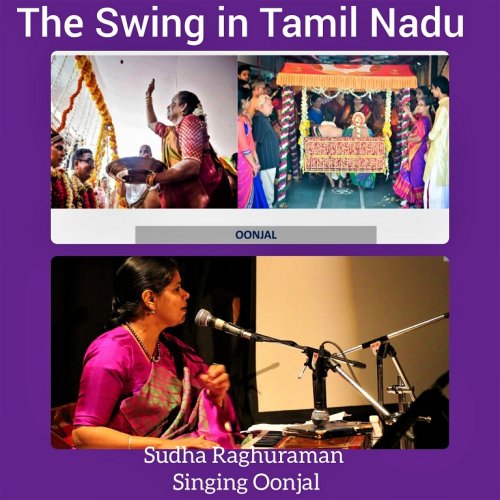 Sudha Raghuraman Traveling South in Tamil Nadu, the Jhoola assumed a social ritual. Accompanied by songs sung by women, newlyweds swing, their bodies intermittently touching and communicating sexual energies. The songs inform them of the ups and downs of married life. Carnatic singer Sudha Raghuraman sang evocatively the Oonjal song referring to the fish-eyed Goddess Meenakshi - "Kannoonjal aadi inrundhaal" (Happy she became on the golden swing, in love with the Lord of all). The layered elaboration by Jafa from one region of India to another served to bridge a series of creative expressions. The architectural majesty of the Hondol Mahal (Mandu) was translated in dance as Jhoola Paran by Prerana Shrimali. Its majestic slanting buttressed walls, moving arches, forceful, symmetrical lines came alive in the syllabic sounds and movements displayed in the brief performance. Building the momentum of abstraction the performance of the mystic Bauls, Madhusudan and Samanta, presented the various stages of individual evolution through the image of swinging from one chakra (psychic center) to another. 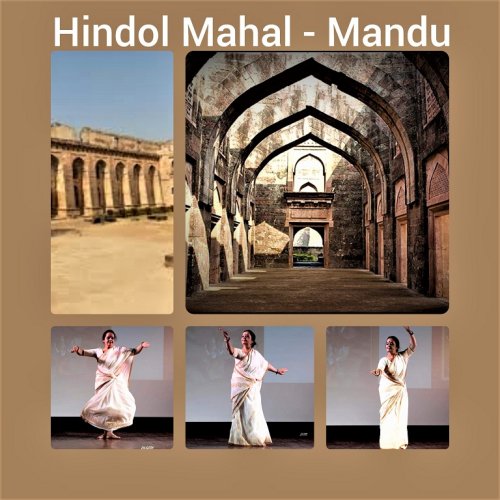 Prerana Shrimali 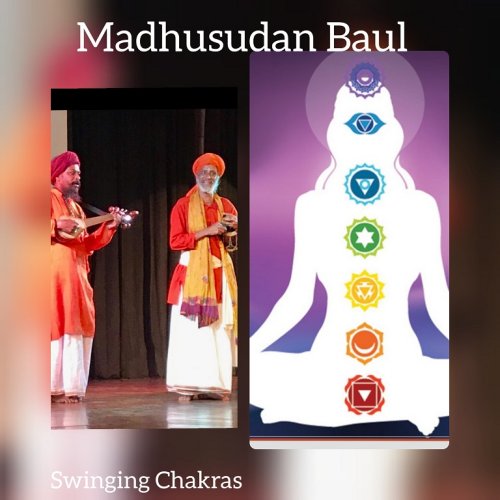 Madhusudan Baul Jafa began her presentation quoting the manner craftsmen making swings for homes and rituals view it as a symbol of Time. This was aptly illustrated in a photograph by Jaison Thomas. The photograph froze the last part of a brief dance performance by Saswati Sen, Prerana Shrimali and Jafa herself. Shrimali in white stands in front (time 'future'), her hand that kept the tala escapes to the future; however, Shrimali's lowered gaze holds time in the present. Saswati Sen in energized red in the middle, symbolizes 'present', her raised hand and arrested gaze on the ground. Positioned in time 'past,' Jafa in white, her hands raised and gaze aspire to swing in the future. Nonetheless, time 'present' is the only reality - the photograph on the Jhoola represents the human mind affected by shadowed white images of the past and future, illusions that impact the present. Navina Jafa's presentation presented a travelled experience through a cultural motif. Her unique interpretation of the Indian arts was novel. The modality re-introduced the idea of performance of the arts through a truly Indian way in the contemporary context. Navina Jafa dedicated the program to Dr. Kapila Vatsyayan, whose work spans more than 7 decades. Vatsyayan has contributed greatly as a scholar, and the most impactful cultural administrator. Even today, the creative community benefits from her selfless work for arts and artists, be it awards, housing schemes, scholarships in the ministry or cultural institutions like the CCRT, National Academies and many more. She was the one who brought Pandit Birju Maharaj and Yamini Krishnamurti to Delhi. While Pt Birju Maharaj graced the occasion, Yamini Krishnamurti sent a note which was read out by Jafa: "Kapilaji saw me as a young teenager and brought me to Delhi. She has supported me all her life. It was Kapilaji who launched Indian arts and culture on the global map. Until my last breath, I will remember her." (Yamini Krishnamurti - New Delhi - 30th Sept 2019) Sundari Bhatti completed the media journalism program from the Jamia Milia Islamia University. |